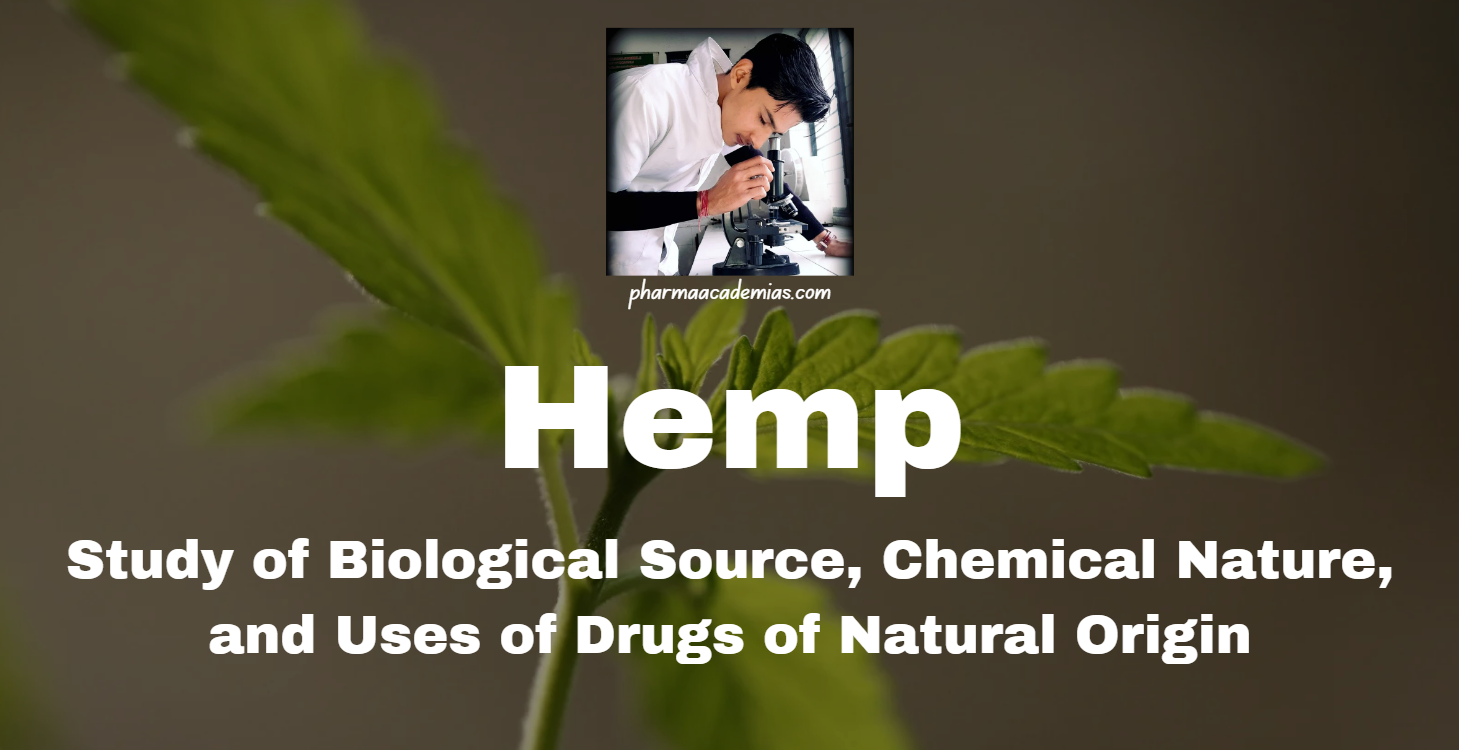
Biological Source of Hemp
Scientific Name: Cannabis sativa L.
Family: Cannabaceae
Part Used: The bast fibers obtained from the stem of the hemp plant.
Chemical Nature of Hemp
Hemp fibers are primarily composed of cellulose, hemicellulose, lignin, and pectin. These components contribute to the mechanical properties and versatility of hemp fibers.
Chemical Composition of Hemp
Cellulose: Approximately 70-80%
Hemicellulose: Around 15-20%
Lignin: About 3-5%
Pectin, Waxes, and Others: Minor components
Structural Characteristics of Hemp
Cellulose: A polysaccharide made up of β-D-glucose units, providing strength and flexibility.
Hemicellulose: Complex carbohydrates that help in binding with cellulose fibers.
Lignin: An organic polymer that adds rigidity and resistance to microbial degradation.
Pectin: A polysaccharide that helps in binding the cells together.
Uses of Hemp
1. Textile Industry:
Fabrics and Clothing: Hemp fibers are used to produce a variety of textiles, including clothing, due to their strength, durability, and breathability.
Ropes and Twines: Hemp is well-known for its use in making strong ropes and twines, utilized in various applications such as marine, agriculture, and industry.
2. Construction:
Hempcrete: A sustainable building material made from hemp hurds (the woody core) mixed with lime. It is used for construction and insulation due to its lightweight, breathable, and insulating properties.
Fiberboard: Hemp fibers are used in the production of fiberboard and other composite materials used in construction.
3. Paper Industry:
Paper Production: Hemp is used to produce high-quality, durable paper. Hemp paper is more sustainable and has a longer lifespan compared to paper made from wood pulp.
4. Automotive Industry:
Composites: Hemp fibers are used in the manufacturing of biocomposites for automotive parts. These composites are lighter and more environmentally friendly than traditional materials.
5. Food and Nutrition:
Hemp Seeds and Oil: Hemp seeds are highly nutritious, containing essential fatty acids, proteins, and vitamins. Hemp seed oil is used in cooking, dietary supplements, and skin care products.
6. Agricultural Uses:
Soil Remediation: Hemp is used in phytoremediation to remove contaminants from soil due to its deep root system and ability to absorb heavy metals.
Animal Bedding: Hemp hurds are used as bedding material for livestock and pets due to their high absorbency and biodegradability.
7. Medicinal Uses:
CBD Production: Hemp is a source of cannabidiol (CBD), a non-psychoactive compound used for its potential therapeutic benefits, including pain relief, anti-inflammatory properties, and anxiety reduction.
Traditional Medicine: Hemp has been used in traditional medicine for various purposes, including as an analgesic, anti-inflammatory, and for treating skin conditions.
8. Environmental Impact:
Sustainability: Hemp cultivation is environmentally friendly as it requires fewer pesticides and herbicides compared to other crops. It also has a high growth rate, making it a renewable resource.
Carbon Sequestration: Hemp absorbs a significant amount of CO2 during its growth, contributing to the reduction of greenhouse gases.
In summary, hemp is a highly versatile natural fiber with extensive applications in textiles, construction, paper production, automotive industry, food and nutrition, agriculture, and medicine. Its chemical composition, predominantly cellulose, hemicellulose, and lignin, provides the necessary properties for its wide range of uses, making it an essential material in various sectors.

